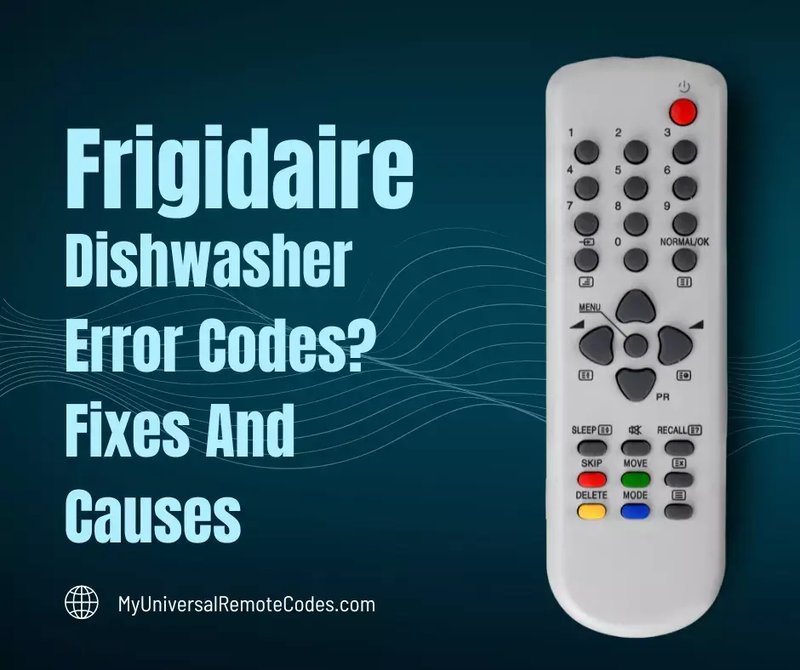
The E2 error code on a Frigidaire dishwasher is essentially its way of telling you that something’s amiss. Think of it as a friendly nudge that something isn’t working quite right, much like your car’s check engine light. The appliance uses these codes to communicate specific problems that need attention. It’s important not to ignore such messages because, just like your car, your dishwasher needs regular TLC to function properly. So, what’s the deal with this tricky E2 code? Let’s break it down.
Understanding the E2 Error Code
The E2 error code signifies a drainage problem in your Frigidaire dishwasher. When your dishwasher can’t properly expel wastewater, it triggers this notification. Think of it like when you’re trying to drain pasta and the water just won’t go through the strainer—annoying, right? Similarly, your dishwasher can’t proceed with its cycle if the water doesn’t drain as it should.
Most commonly, the E2 error is caused by an obstruction in the drain hose or a problem with the drain pump. The drain hose could be kinked, blocked by food debris, or placed improperly. Imagine trying to drink through a bent straw—very little liquid gets through—and this is precisely what’s happening with your dishwasher. Over time, food particles and other residues build up, clogging the hose and impeding the flow of water.
Next, consider the drain pump. This little gadget works like a mini water slide, pushing the wastewater out of your appliance. If it’s malfunctioning, you’ll see an E2 code. The pump could be clogged, broken, or simply worn out after years of hard use. Understanding these causes helps you know where to look when this pesky code pops up.
Investigating the Drain Hose
So, let’s take a closer look at the drain hose. This component is critical for smooth operation. It’s essentially the exit route for all that dirty water your dishwasher has collected during the wash cycle. If your dishwasher displays an E2 error code, this is a great place to start your investigation.
First, ensure the hose isn’t bent or kinked. A bent hose restricts water flow just like pinching a garden hose stops water from coming out. Simply straighten the hose, ensuring it’s free of any twists or bends. If it’s been crushed behind the appliance or under a cabinet, you may need to adjust its positioning.
Also, check for blockages. Over time, bits of food and grease can accumulate in the hose, creating a blockage. Carefully detach the hose and run water through it using your sink to ensure there’s no obstruction. If you notice water isn’t flowing freely, you might need to clean it out. A flexible bottle brush or even a piece of wire can help clear the blockage.
Lastly, double-check that the hose is installed correctly. The end of the hose should be higher than the water level in the dishwasher to prevent siphoning, which can cause drainage issues. If you identify a problem at this stage, correcting it often clears the E2 error.
Examining the Drain Pump
If you’ve checked the hose and the error persists, it’s time to consider the drain pump. This component is crucial, acting much like a heart pumping waste water out and away from your machine after it’s been used. When the pump doesn’t work properly, water can’t get out, and the E2 code rears its head.
To check the pump, you’ll need to access the rear or bottom of your dishwasher, depending on your model. It’s important to turn off the power first—safety first, always! Once you’re in, look for signs of clogs. Just like a vacuum cleaner that’s lost its suction, a clogged pump can’t do its job efficiently. Debris like broken glass, plastic bits, or food particles are common culprits.
If the pump itself is damaged—like a broken impeller or seals—repair might not be possible, and replacement could be the best option. When replacing, ensure the new pump is compatible with your specific dishwasher model.
After addressing issues with the pump, reassemble everything, restore power, and run a test cycle. Hopefully, with a little bit of elbow grease, your dishwasher should be back to its sparkling self.
Preventing Future E2 Errors
While fixing the problem is a priority, preventing it from happening again is just as important. Regular maintenance and a few simple habits can go a long way in prolonging the life of your dishwasher and avoiding those frustrating error codes.
Start by rinsing dishes thoroughly before loading them. You don’t need to pre-wash them, but removing large food particles can prevent blockages. Think of it as clearing the path for a smooth ride—less debris means fewer interruptions.
Frequently clean the dishwasher’s filters. They catch food particles, preventing them from clogging the drain. Removing and washing these filters once a month can significantly reduce drain issues. Treat your dishwasher like a good friend—show it some love and care so it doesn’t break down when you need it most.
Lastly, schedule regular inspections. Just like a doctor’s check-up, having a professional inspect your appliance periodically can catch potential problems before they become serious. They might spot things you’d miss, keeping your dishwasher running efficiently and error-free.
By understanding the E2 error code and taking steps to fix and prevent it, you’ll ensure your Frigidaire dishwasher continues to be a reliable kitchen companion. So the next time you see that code pop up, you’ll know exactly what to do.